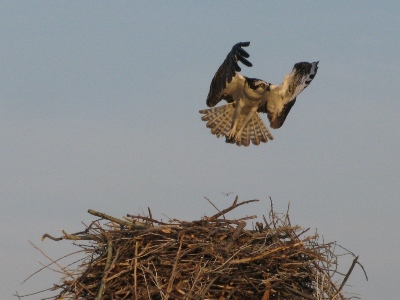
Baltimore County recently completed six large-scale stream restoration projects in four severely compromised waterways in order to address erosion, reduce pollutant and sediment loads, and improve water quality and aquatic habitat locally, and in the Chesapeake Bay.
“We have significantly increased funding to our Capital Waterway Improvement Program to address issues like streambank erosion and channel degradation that lead to major problems with water quality, loss of habitat and property damage,” County Executive Olszewski said.
The recently completed stream restoration projects total approximately 4.5 miles and include:
White Marsh Run, West Branch North Fork
Located in Perry Hall from Silver Meadow Lane to Perry Hall Boulevard, this project involved the stabilization of degraded natural channel along several tributaries.
Improvements include reconnection to adjacent floodplains, stabilization of eroded banks, and sanitary sewer line protection which have improved water quality.
White Marsh Run Tributary at Upton Road
Located in Parkville near Upton Road, this stream restoration regraded and stabilized highly eroded stream banks, added step pools for in-channel energy dissipation and repaired several damaged stormwater outfalls.
Slaughterhouse Branch
Located in a residential area of Pikesville just north of the Baltimore Beltway between Stevenson Avenue and Greenspring Avenue, this project stabilized steep slopes, allowed storm flows to access the natural floodplain and protected vital infrastructure, including sanitary sewers and utility poles that were compromised by erosion.
Roland Run at Greenspring Drive
Located in Lutherville from Business Park Drive to Spring Avenue, this project includes tributaries east of the Ridgely Road MTA Park and Ride. Eroded streambanks and stormwater outfalls were stabilized, trash and debris were removed and extensive landscaping was planted to better filter overland runoff.
Cooper Branch
Located in Catonsville along the popular Number Nine Trolley Line Trail between Stonewall Road and Oella Avenue, this project used natural channel stabilization techniques, including rock step pools and cascades, to address widespread stream degradation, protecting private properties and sanitary sewer and storm drain infrastructure that were compromised by erosion.
Scotts Level Branch at Marriottsville Road
Located in Randallstown between Marriottsville Road and Tiverton Road, this suburban stream channel was modified to address erosion and allow storm event flows access to the adjacent floodplain. This project also stabilized nine storm drain outfall channels.
Broad Benefits of Investing in Healthy Streams
Many of the County’s stream systems have become impaired due to historical land-use changes, poor development practices prior to stormwater management regulations and the pressures of increased urbanization.
Challenges include increased impervious surface, such as pavement and roofs; diminished buffer areas where trees and vegetation help shade the stream, slow runoff, and reduce pollutants; as well as outmoded efforts to channelize streams and contain flood flows.
Baltimore County’s nationally-recognized watershed restoration and stream stabilization program improves the ecological and hydrologic function of degraded streams using an adaptive natural channel design approach.
The projects help the County meet state and federal mandates for the overall water quality improvement and health of the Chesapeake Bay and local waterways, using methods that include:
- Stabilizing stream banks to reduce the downstream flow of sediments
- Creating riffles and pools to slow the damaging rush of water
- Providing essential habitat and promoting the proper exchange of microorganisms, dissolved gasses and particles that are necessary for healthy streams
- Restoring long-term natural stream functioning by replacing outdated, deteriorated channels with natural, native materials like rock, logs and vegetation
- Planting and enhancing vegetative buffers to reduce nutrient pollution and provide habitat
The County’s FY 2020 capital budget includes a total of $22.5 million to fund watershed restoration projects.
source: Baltimore County
Leave a Reply
You must be logged in to post a comment.